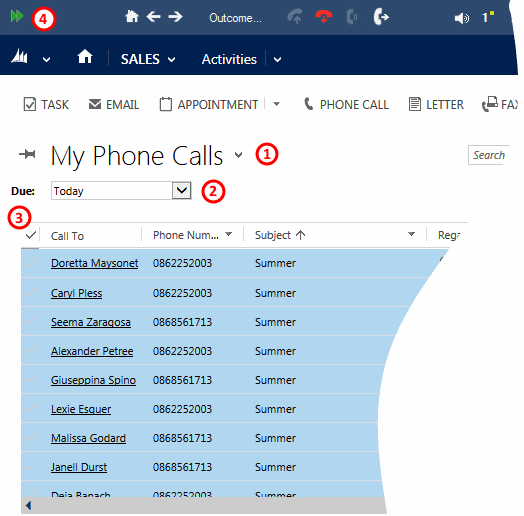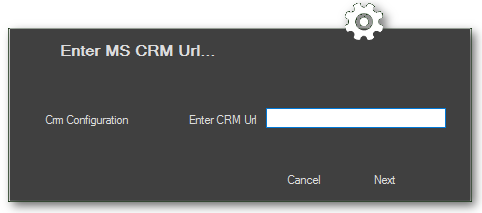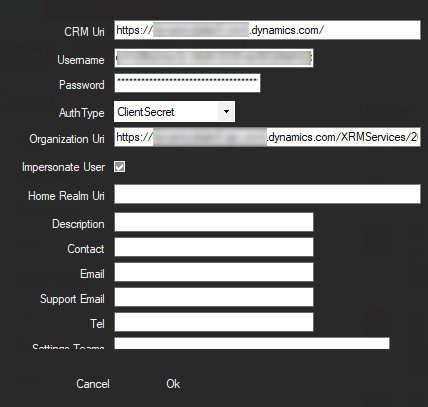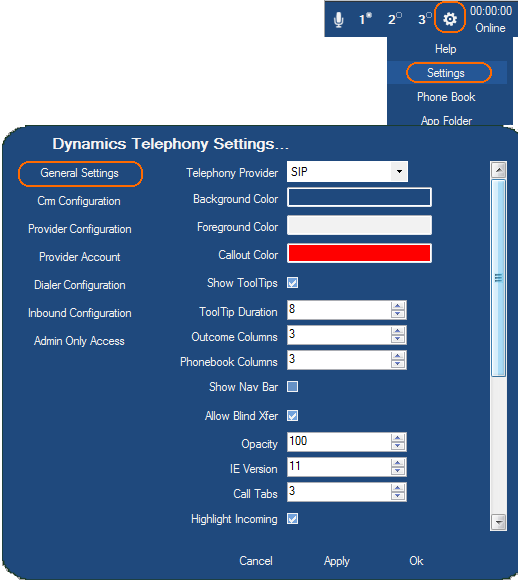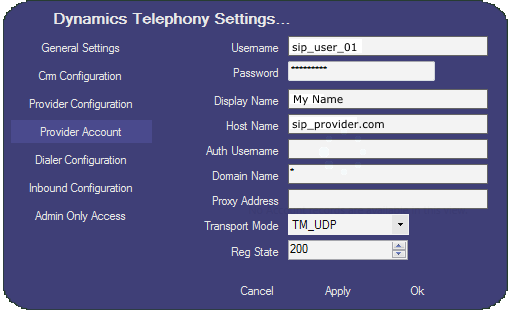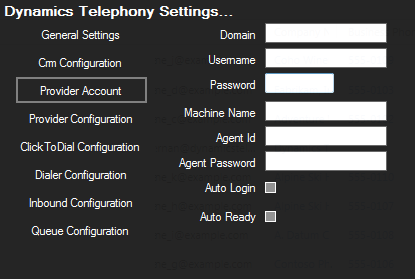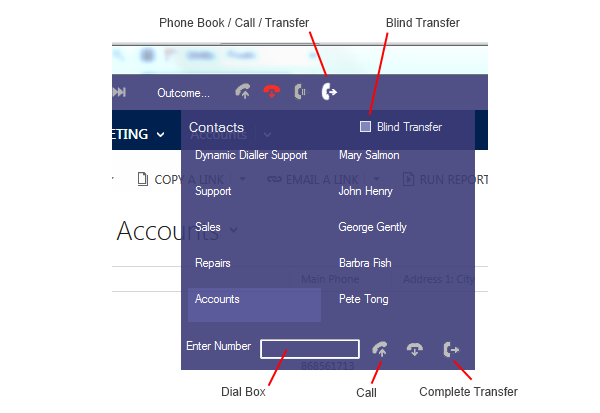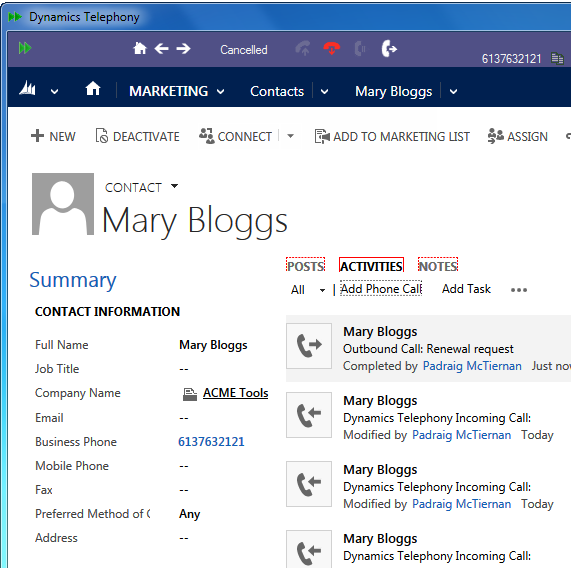The Call Outcomes can be configured as follows.
- To set the number of columns in the Outcomes menu, see Settings > General Settings > Outome columns
- Go to dashboard: Dynamics Telephony – Call Outcomes to set the outcome buttons.
NOTE: If you do not see all the records so click “See the records associated with this view”
Fields:- Index: This determines the position of the button.
- Name: this is the text displayed on the button.
- Description: This is for your own use.
- isCallEnd: If “True” then clicking the button will also hang up the phone call. You can use this on all outcomes and train agents to set the outcome as they hang up the call. Definitely use it on outcomes such as “Fax”.
- isClose: If “True” then clicking the button will mean this phone call is not attempted again in the Progressive Dialer AND the associated Phone Call in CRM is closed. Use this for Outcomes such as “Wrong Number”, “Yes” or “No”.
- isDefault: If “True” then this outcome is applied to the phone call in the Progressive Dialer if no other outcome is chosen.
- isWrap: If “True” then Wrap time will be applied once the call is released. Use this for outcomes that should have a defined Wrap time.
- isCallback: If “True”, the agent will get a popup to set the callback date and time. this date and time will be saved in the phonecall activity as “Due”, and possible sent to DTI (if installed)
- isConnectXorAbort. Only for handling Contact Center outbound calls with DTI. See here.
- reqConnect: If “True”, this outcome cannot be chosen unless the call has been answered by the customer.
- retryMax: After this number of retry attempts, if this outcome is chosen, the phone call is NOT tried again by Progressive Dialer. For example, you might choose to only try 3 times if the customer is “Busy”. If the value is 0, then choosing this outcome means the phone call is NOT tried again by Progressive Dialer
- retryTime: The number of minutes to bring this phone call back in the Progressive Dialer. For example, you might set Busy at 10 minutes.
- See here for other settings such as preview time, no-answer treatment and wrap time.
TIPS
For an outcome you would select while previewing a call – when you decide you don’t want to make the call ever, use settings like: Name: Hoax, reqConnect:false, isWrap:false, isCallEnd:true, isClose:true
